Integrating Interactive Metaverse Environments and Generative Artificial Intelligence to Promote the Green Digital Economy and e-Entrepreneurship in Higher Education
Abstract
1. Introduction
2. Research Problem
3. Research Questions
- What is the impact of the integration of the interactive metaverse environment and generative artificial intelligence on promoting the green digital economy in the “Computers in Education” course for graduate students?
- What is the impact of the integration of the interactive metaverse environment and generative artificial intelligence on green e-entrepreneurship in the “Computers in Education” course for graduate students?
- What is the impact of the integration of the interactive metaverse environment and generative artificial intelligence on the production of a green digital entrepreneurial product in the “Computers in Education” course for graduate students?
4. Research Hypotheses
5. Research Objectives
5.1. Significance of the Research
- Directing university education officials to pay attention to the need to employ three-dimensional virtual learning environments (the metaverse) in university education.
- Directing university education officials to pay attention to the need to employ modern generative artificial intelligence applications in university education.
- Providing a smart training environment based on the integration of the metaverse learning environment and modern artificial intelligence platforms, which can benefit those interested in sustainable development in promoting the green digital economy, as well as producing green digital entrepreneurial businesses that can benefit society and achieve environmental sustainability.
- Developing society and achieving sustainable development by encouraging students to design and produce green entrepreneurial projects and ideas.
5.2. Research Limitations
- The following artificial intelligence platforms: To ensure the provision of an integrated digital educational experience that supports innovation and sustainability, a group of modern digital platforms was employed, combining metaverse and generative artificial intelligence technologies. The FrameVR platform was used to provide a 3D virtual reality learning environment that allows students to interact in an immersive way. Poe was also employed to power the ChatGPT model to support students in content generation and provide immediate assistance. In educational media production, Elai.io was used to create professional educational videos, and Tome.app was used to design engaging presentations. Whimsical was used to design electronic mind maps to help organize ideas, while D-ID was used to convert still images into realistic audio-supported videos. Durable was used to create professional educational websites for students’ digital projects. Finally, Tutor AI was employed to design and create interactive educational lessons that enhance learner independence and contribute to the development of advanced digital skills.
- “Computer in Education—474 Approach-2” course.
- Green Digital Economy Skills: digital technology, digital transformation, continuous digital learning, digital sustainability.
- Green E-Entrepreneurship Skills: proactive action, innovation preference, self-efficacy, achievement motivation, non-conformity, and digital dynamics.
6. Research Literature
6.1. Metaverse and Green Digital Economy
6.2. Generative Artificial Intelligence and Education
- Smart Content:
- 2.
- Smart Learning:
- 3.
- Chat GPT:
6.3. Green Digital Entrepreneurship
6.4. This Research Is Distinguished
7. Methods and Procedures
7.1. Research Methodology
7.2. Research Procedures
7.2.1. Selecting the Research Sample
7.2.2. Preparing Research Materials
- Defining the general objectives of the training environment based on the integration of an interactive metaverse environment and generative artificial intelligence platforms. The overall objective of this environment is to promote the green digital economy and green e-entrepreneurship.
- Defining Learner Characteristics: Graduate students at the College of Education, King Khalid University, are studying the “Computers in Education—474 Approaches-2” course in the first semester of the academic year (2023). They come from a similar environment with similar conditions, and their skills in using computers and the internet are almost identical. The research group comprised 25 students.
- Educational environment capabilities: the metaverse platform (https://framevr.io) and the generative artificial intelligence platform (https://poe.com) were used.
- Educational material: The educational content was defined as five educational topics in the “Computers in Education” subject.
- The first topic, “Computer Software,” covers the basics of understanding software and its types. It aims to enable students, upon completion, to discuss the nature of software and differentiate between its various types, with a focus on application software. Students are also expected to be able to compare these software programs in terms of function and use, and to acquire the skill of designing a professional presentation using modern digital tools that creatively reflect their understanding of the theoretical content.
- The second topic, “Computer Uses,” focuses on exploring the roles of computers in the educational process. It aims to enable students to clarify the various uses of computers in education and discuss the patterns of their employment in the classroom and virtual environments. The student is also expected to acquire the ability to use available electronic content authoring tools and employ them to design interactive electronic content that supports active learning and enhances the student’s digital experience.
- The third topic, “Electronic Mind Maps,” addresses the concept of mind maps in their digital form. It aims to enable the student to discuss the nature of these maps and explain their importance in organizing ideas and enhancing the visual understanding of content. The student is also expected to develop their technical skills by designing an electronic mind map using specialized tools and to be able to publish and share it in electronic learning environments that support collaboration and interactive learning.
- The fourth topic, “The Internet and Education,” addresses the basics of internet technology and its relationship to digital education. Upon completion of this topic, the student is expected to be able to accurately define the internet and differentiate between the concepts of the internet, the intranet, and the web in terms of structure and uses. They are also expected to discuss the most important services the internet provides to support education, such as e-learning, synchronous and asynchronous learning, and access to knowledge resources. On the practical side, students must acquire the ability to design an interactive educational website that utilizes their learning to support the educational process in a creative and comprehensive manner.
- The fifth topic, “e-Learning,” focuses on understanding the theoretical and practical foundations of this type of education. It aims to enable students to discuss the nature of e-learning as a modern method of education based on digital technology. Students are also expected to be able to differentiate between its various types, such as synchronous and asynchronous learning, self-paced learning, and blended learning. They are also expected to clarify the importance of e-learning in expanding access to education and achieving flexibility in learning. On the practical level, students are required to design a professional interactive video employing appropriate digital tools that reflect their understanding of the content and contribute to enhancing the e-learning experience.
- Topic 1: Computer Software
- Topic 2: Computer Uses
- Topic 3: Electronic Mind Maps
- Topic 4: The Internet and Education
- Topic 5: e-Learning
7.3. Preparing Research Tools
- A.
- Defining the Scale’s Objective:
- B.
- Scale Items:
- C.
- Refining the scale by:
- Exploratory application of the scale: The scale was applied to a pilot sample of 16 graduate students at the College of Education, King Khalid University, to determine the linguistic and scientific suitability of the statements. Their responses demonstrated the linguistic and scientific suitability of the scale statements.
- Internal consistency of the scale:
- D.
- Final Form of the Scale: After formulating the scale and statistically adjusting it, the scale became valid for final application.
- A.
- Defining the Scale’s Objective:
- B.
- Scale Items:
- C.
- Scale adjustment through:
- D.
- Internal consistency of the scale:
- E.
- Final Form of the Scale: After formulating the scale and statistically adjusting it, the scale became valid for final application.
- A.
- Objective of the Card:
- B.
- Card Paragraphs:
- C.
- Presenting the initial version of the card to a group of judges:
- D.
- Exploratory Application of the Card:
- E.
- Calculating the Card’s Scores:
- F.
- Final Form of the Card:
8. Research Results and Discussion
8.1. Practical Significance of the Research Results
- Green Digital Economy (η2 = 0.96):
- Green e-Entrepreneurship (η2 = 0.87):
- Green Digital Products (η2 = 0.83):
- Overall Interpretation:
8.2. Discussion of Research Results
9. Conclusions
Author Contributions
Funding
Institutional Review Board Statement
Informed Consent Statement
Data Availability Statement
Acknowledgments
Conflicts of Interest
References
- Liao, P. Metaverse technology and their foreseen impact on the digital economy. Strateg. Chang. 2022, 31, 23–31. [Google Scholar] [CrossRef]
- Kaur, G.; Kaur, H.; Bhanot, S. A comprehensive analysis of metaverse technology: A vision for the future. J. Ambient. Intell. Humaniz. Comput. 2022, 13, 1479–1493. [Google Scholar]
- Hafez, E.H. Metaverse and the Future of Education: Educational and Learning Applications from Curricula; Academic Center for Publishing and Distribution: Cairo, Egypt, 2024. [Google Scholar]
- Amer, F.H. The Metaverse: A Digital Media Revolution; Al-Arabi Publishing and Distribution: Cairo, Egypt, 2023. [Google Scholar]
- Hadi, M.A.A. Student Engagement: An Approach to Quality Learning Outcomes; Dar Al-Maseera Publishing and Distribution: Amman, Jordan, 2019. [Google Scholar]
- Marr, B. Artificial Intelligence Applications: How 50 Successful Companies Used AI and Machine Learning to Solve Problems; Haddad, A.Y., Translator; Obeikan Library: Riyadh, Saudi Arabia, 2022. [Google Scholar]
- Allah, A.D. The penetration of technology as a substitute for humans and its impact on the economy. In Post-Humanism: Virtual Worlds and Their Impact on Humans; Amr, A., Ed.; Afaaq Al-Maarifa Publishing: Amman, Jordan, 2022; pp. 205–229. [Google Scholar]
- Chui, M.; Hazan, E.; Roberts, R. The Economic Potential of Generative AI: The Next Productivity Frontier. J. Egypt. Soc. Inf. Syst. Comput. Technol. 2023, 33, 33–34. [Google Scholar]
- Ismail, M. The Effectiveness of the Green Economy in Achieving Sustainable Development. J. Adm. Res. 2023, 41, 1–28. [Google Scholar]
- Ranan, R.; Ben Bair, H. The Impact of Human Capital on the Digital Economy in Arab Countries: An Econometric Study for the Period 2013–2020. J. Financ. Mark. 2022, 9, 244–266. [Google Scholar]
- Albanna, T.A. Developing the Geography Curriculum for First-Year Secondary Students in Light of the Concept of Green Economy to Enhance Sustainable Development Dimensions and Social Responsibility. J. Educ. Sohag Univ. 2023, 112, 931–1002. [Google Scholar]
- Al-Hadrami, N.K. The Role of University Leadership in Achieving the Green Economy in Light of Saudi Vision 2030. Arab. Stud. Educ. Psychol. 2020, 1, 247–276. [Google Scholar]
- Fattah, A. The UAE Strengthens Its Position as a Global Center for the Green Economy. Islam. Econ. Mag. 2022, 43, 10–12. [Google Scholar]
- Al-Kalbani, S.M. Applications of Artificial Intelligence; Konooz Al-Maarefa: Amman, Jordan, 2024. [Google Scholar]
- Halaweh, M. ChatGPT in education: Strategies for responsible implementation. Contemp. Educ. Technol. 2023, 15, ep421. [Google Scholar] [CrossRef]
- Omar, A. Introduction to Modern Entrepreneurship; Cultural Creativity House: Cairo, Egypt, 2022. [Google Scholar]
- Lorin, J.; Karri, R.; Rossiter, N. Fostering entrepreneurial drive-in business education: An attitudinal approach. J. Manag. Educ. 2007, 31, 17–42. [Google Scholar]
- Al-Hana’i, Z.H.; Shahat, M.A. Content analysis of the 6th grade Omani science curriculum in light of entrepreneurship skill development requirements. Arab. J. Educ. 2022, 41, 291–332. [Google Scholar]
- Ayoub, A. The Effectiveness of a Program Based on Practical Intelligence in Developing Entrepreneurial Skills and Solving Future Problems Among Secondary School Students. Educ. Soc. Stud. 2015, 21, 299–366. [Google Scholar]
- Al-Rumaidi, B.S. Evaluating the role of Egyptian universities in developing students’ entrepreneurial culture: A proposed improvement strategy. J. Financ. Bus. Econ. 2018, 1, 372–397. [Google Scholar]
- Almeman, K.; Ayeb, F.E.L.; Berrima, M.; Issaoui, B.; Morsy, H. The integration of AI and metaverse in education: A systematic literature review. Appl. Sci. 2025, 15, 863. [Google Scholar] [CrossRef]
- Kusetogullari, A.; Kusetogullari, H.; Andersson, M.; Gorschek, T. GenAI in entrepreneurship: A systematic review of generative artificial intelligence in entrepreneurship research: Current issues and future directions. J. Bus. Ventur. Insights 2025, 13, e00321. [Google Scholar]
- Nedungadi, P.; Tang, K.-Y.; Raman, R. The transformative power of generative artificial intelligence for achieving the sustainable development goal of quality education. Sustainability 2024, 16, 9779. [Google Scholar] [CrossRef]
- Atiya, W.S. Digital Green Education in a Virtual Environment to Impart Entrepreneurship Concepts and Improve Cognitive Agility and Future Thinking Among Education Faculty Students with High and Low Psychological Immunity. Int. J. E-Learn. 2023, 10, 11–172. [Google Scholar]
- Schrum, L.; Levin, B. Leading 21st Century Schools: Harnessing Technology for Engagement and Achievement; Al-Saadoun, I.A.K., Translator; King Saud University Press: Riyadh, Saudi Arabia, 2018. [Google Scholar]
- Bekkers, V.; Edelenbos, J.; Steijn, B. Innovation in the Public Sector: Linking Capacity and Leadership; Al-Hajan, B.b.Q., Translator; Institute of Public Administration: Riyadh, Saudi Arabia, 2019. [Google Scholar]
- Al-Hanai, S.K.; Hamed, O.I.; Khalaf, M.K.; Al-Musawi, A.B.S. The green digital economy. J. Educ. Psychol. Sci. 2023, 7, 20–35. [Google Scholar]
- Ahmed, O.; Wahabi, T. Graduates of Educational Institutions and the Labor Market. Mina J. Econ. Stud. 2018, 2, 159–182. [Google Scholar]
- Butler, H.; Hebel, E.R.; Cohen, M. Employing Technology in Successful Classroom Teaching; Musto, S., Translator; Obeikan Library: Riyadh, Saudi Arabia, 2018. [Google Scholar]
- Al-Shami, G.S. Curriculum Engineering and Anticipating the Future of Technological Innovation in the Digital Age; Al-Rushd Library: Riyadh, Saudi Arabia, 2020. [Google Scholar]
- Kagan, M. Inspired: Building Digital Products; Hamdi, S.A., Translator; Jabal Amman Publishers: Amman, Jordan, 2023. [Google Scholar]
- Al-Badu, A.M. The importance of using metaverse technology in the teaching and learning process. J. Res. Educ. 2023, 13, 23–51. [Google Scholar]
- Clapp, E.P.; Ross, J.; Oxman Ryan, J.; Tishman, S. Maker-Centered Learning: Empowering Young People to Shape Their Worlds; Arab Nile Group: Cairo, Egypt, 2018. [Google Scholar]
- Anderson, A. Virtual Reality, Augmented Reality, and Artificial Intelligence in Special Education; Al-Othman, A.A.; Al-Askar, H.M., Translators; Majmaah University Publishing and Translation Center: Majmaah, Saudi Arabia, 2023. [Google Scholar]
- Isik, M. Prospects, and challenges of the metaverse in pursuing sustainable development. J. Oper. Intell. 2025, 3, 251–261. [Google Scholar] [CrossRef]
- Khamis, M.A. Modern Trends in Educational Technology and Research Fields—Part 2; Arab Academic Center for Publishing and Distribution: Cairo, Egypt, 2023. [Google Scholar]
- Farjoun, K.M. Metaverse Technology and the Future of Education Development. Int. J. E-Learn. 2022, 5, 53–85. [Google Scholar]
- Mahmoud, Y. Digital Transformation in Education: Culture—Skills—Strategies; Unlimited Knowledge Publishing and Distribution: Amman, Jordan, 2024. [Google Scholar]
- Koniagina, M.; Isaeva, A.; Mukhin, K.; Korollov, A.; Vulfovich, E.; Dochkina, A. Struggle for technological leadership in the digital economy. Rev. Espac. 2019, 40, 10–18. [Google Scholar]
- Doucet, G.; Evers, E.; Guerra, N.; Lopez, M.; Soskil, K. Timmers, teaching in the Fourth Industrial Revolution: Standing at the Edge of Change; Hagrass, S.A., Translator; Arab Bureau of Education for the Gulf States: Riyadh, Saudi Arabia, 2022. [Google Scholar]
- Harasim, H. Learning Theories and Their Applications in E-Learning; Al-Otaibi, S.M., Translator; King Saud University Press: Riyadh, Saudi Arabia, 2020. [Google Scholar]
- Mousa, A.; Bilal, A.H. Artificial Intelligence: A Revolution in Contemporary Technologies; Arab Group for Training and Publishing: Cairo, Egypt, 2019. [Google Scholar]
- Mussarrat, N. Impact of ChatGPT & AI on University Education. 2023. Available online: https://ulab.edu.bd/sites/default/files/CES%20ULAB_Impact%20of%20AI%20%26%20ChatGPT%20on%20Uni%20Education_Nazifa_2023.pdf (accessed on 30 April 2025).
- Saadallah, A.; Shatouh, W. The importance of artificial intelligence in developing education. In Artificial Intelligence Applications as a Modern Trend to Enhance the Competitiveness of Business Organizations; Khawaled, A., Ed.; Arab Democratic Center: Berlin, Germany, 2019; pp. 130–148. [Google Scholar]
- SDAIA. Generative Artificial Intelligence; Saudi Data and AI Authority: Riyadh, Saudi Arabia, 2023. [Google Scholar]
- Abdel Latif, O.G.; Mahdi, Y.H.; Ibrahim, S.K. The Effectiveness of an AI-Based Teaching System in Developing Deep Understanding of Nuclear Interactions and Self-Learning Ability Among Secondary School Students. J. Sci. Res. Educ. 2020, 21, 307–349. [Google Scholar]
- Fryer, L.K.; Nakao, K.; Thompson, C. Chabot learning partners: Connecting learning experiences, interests, and competence. Comput. Hum. Behav. 2019, 92, 279–289. [Google Scholar] [CrossRef]
- Abdul Samee, M.A.H. Student Engagement: An Introduction to Quality Learning Outcomes; Dar Al Masirah for Publishing, Distribution, and Printing: Amman, Jordan, 2019. [Google Scholar]
- Zhai, X. ChatGPT user experience: Implications for education. SSRN Electron. J. 2022. [Google Scholar] [CrossRef]
- Lo, C.K. What is the impact of ChatGPT on education? A rapid review of the literature. Educ. Sci. 2023, 13, 410. [Google Scholar] [CrossRef]
- Kandlhofer, M.; Steinbauer, G. Evaluating the impact of educational robotics on pupils’ technical and social skills and science-related attitudes. Robot. Auton. Syst. 2016, 75, 679–685. [Google Scholar] [CrossRef]
- Fredricks, J.A.; Reschly, A.L.; Christenson, S.L. Handbook of Student Engagement Interventions: Working with Disengaged Students; Elsevier Science: Amsterdam, The Netherlands, 2019. [Google Scholar]
- El-Hady, M.M. Generative artificial intelligence and its future. J. Egypt. Soc. Inf. Syst. Comput. Technol. 2023, 32, 32–36. [Google Scholar]
- Jadi’a, M.Q.; Al-Qahtani, H.H.; Al-Mulhim, A.A.; Al-Mulhim, I.N. Teaching Digital Skills: Issues and Challenges; Dar Al-Zahraa: Beirut, Lebanon, 2022. [Google Scholar]
- Al-Suwaidi, S. Building Digital Platforms; Areeb Platform: Kuala Lumpur, Malaysia, 2020. [Google Scholar]
- Asa, R.; Tsanga, D.; Januarie, C.; Kamati, M. Technological Innovation as a Strategy for Competitive Advantage within the Namibian Banking Industry. Int. J. Manag. Sci. Bus. Admin. 2021, 8, 68–72. [Google Scholar]
- Hekal, H.M. Requirements for e-entrepreneurship in Egyptian universities and ways to enhance them in light of the COVID-19 pandemic: A foresight study. J. Fac. Educ. 2022, 1, 423–486. [Google Scholar]

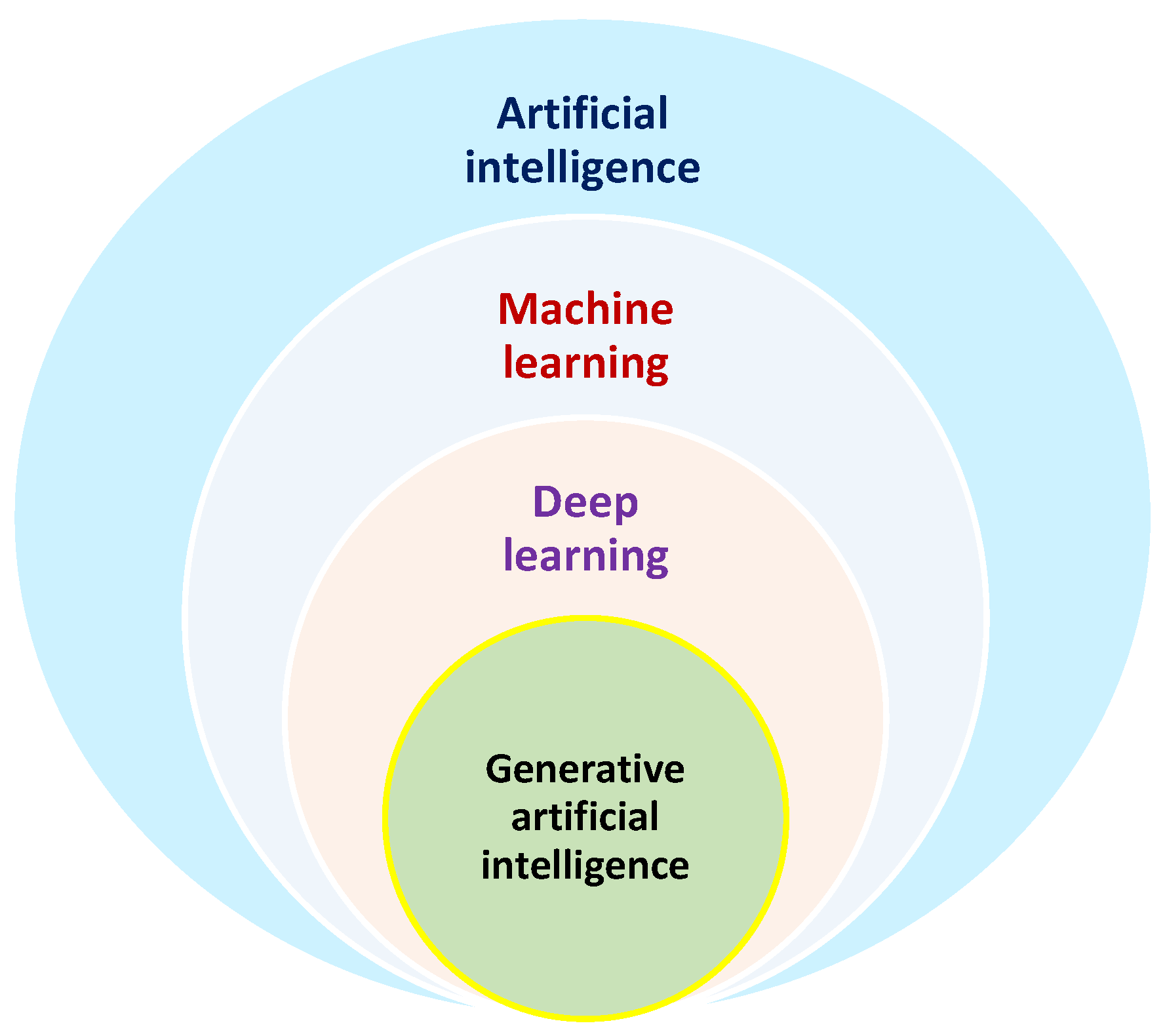
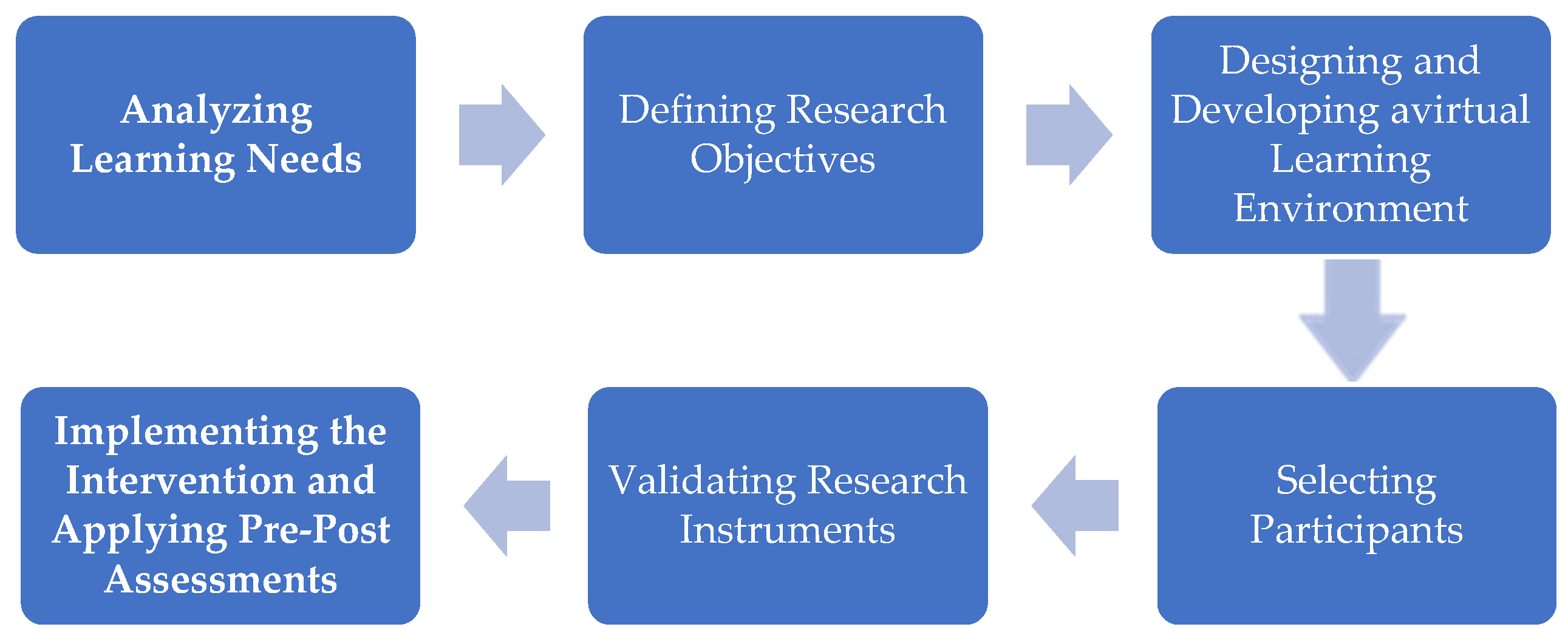
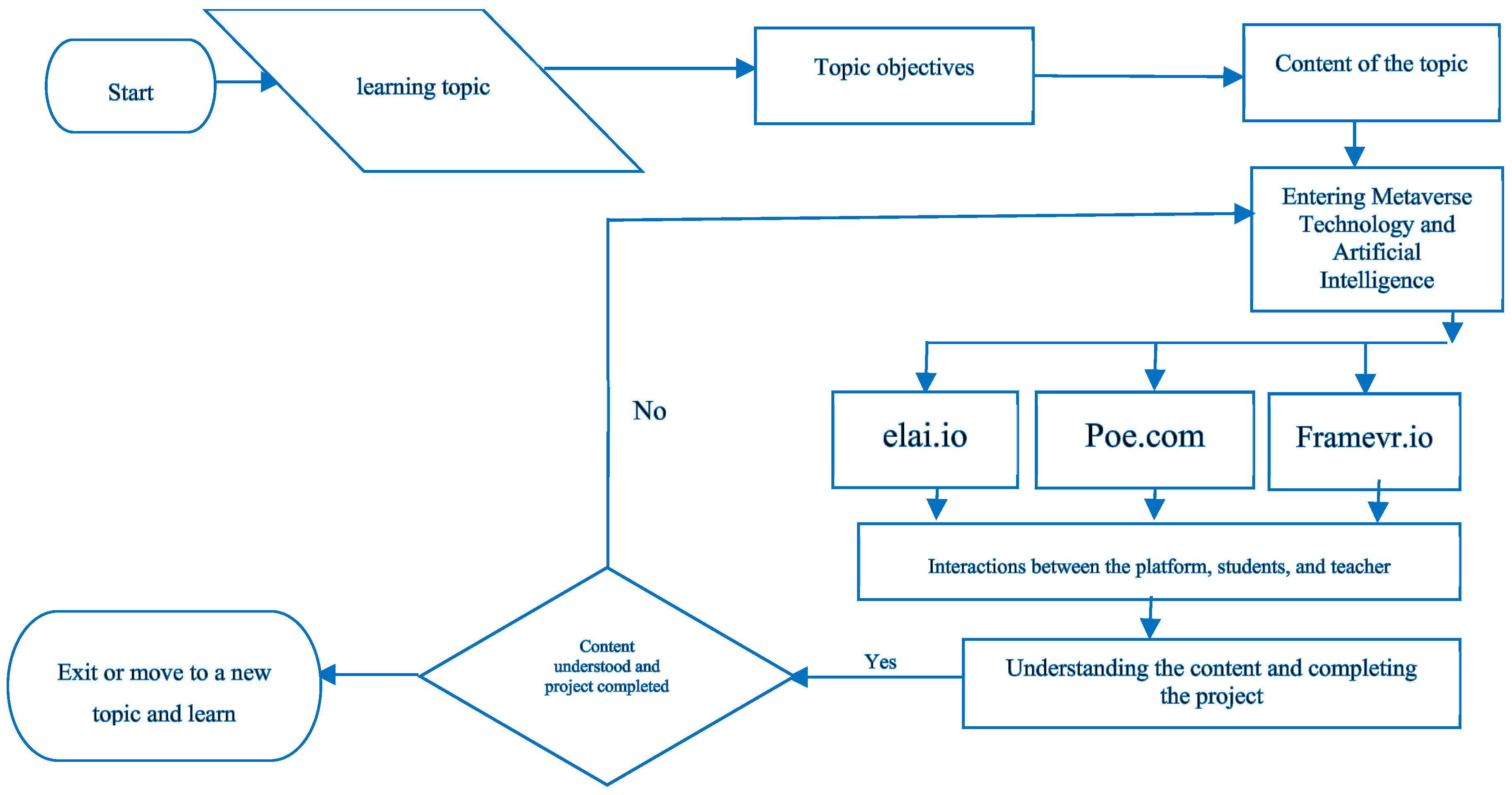
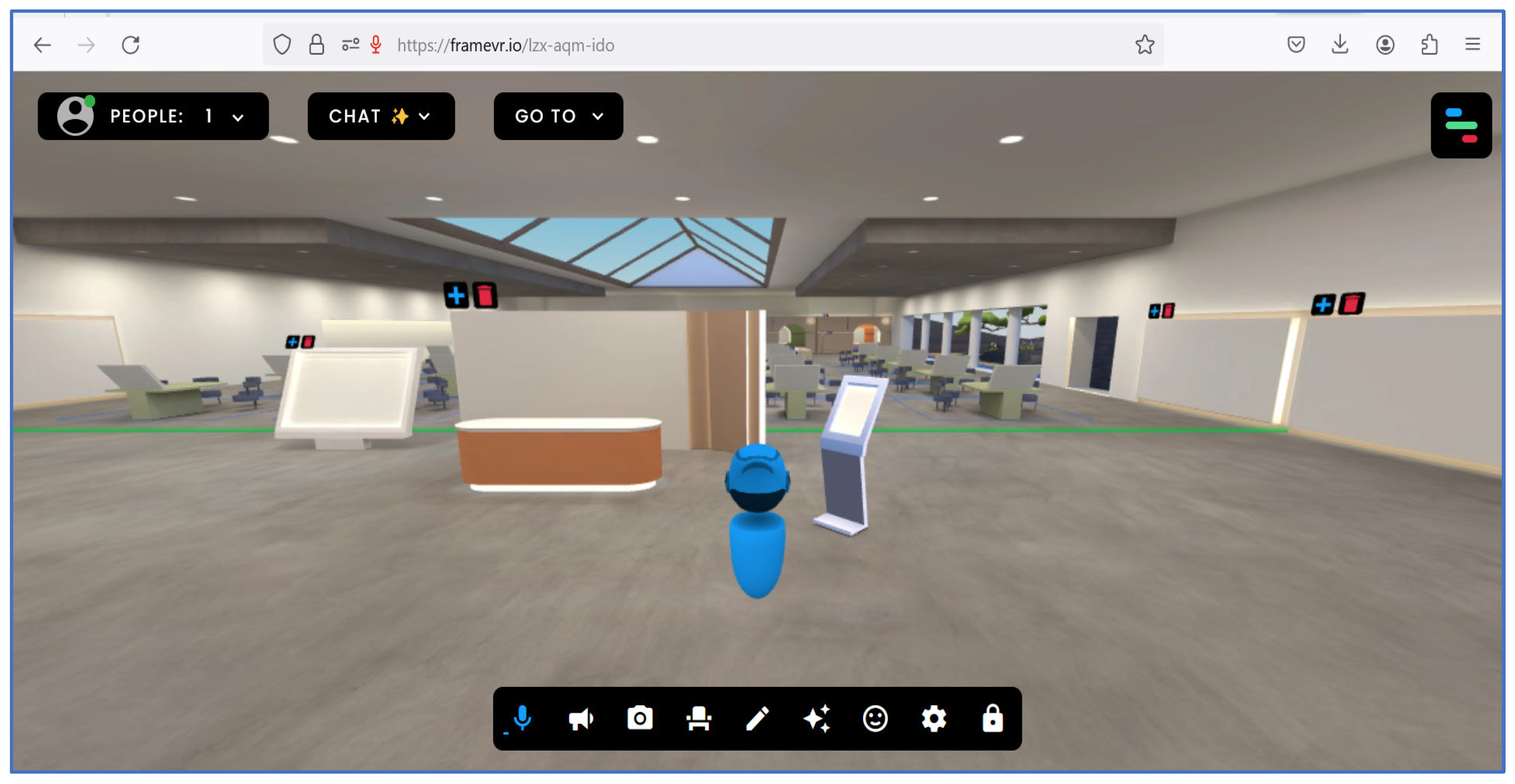
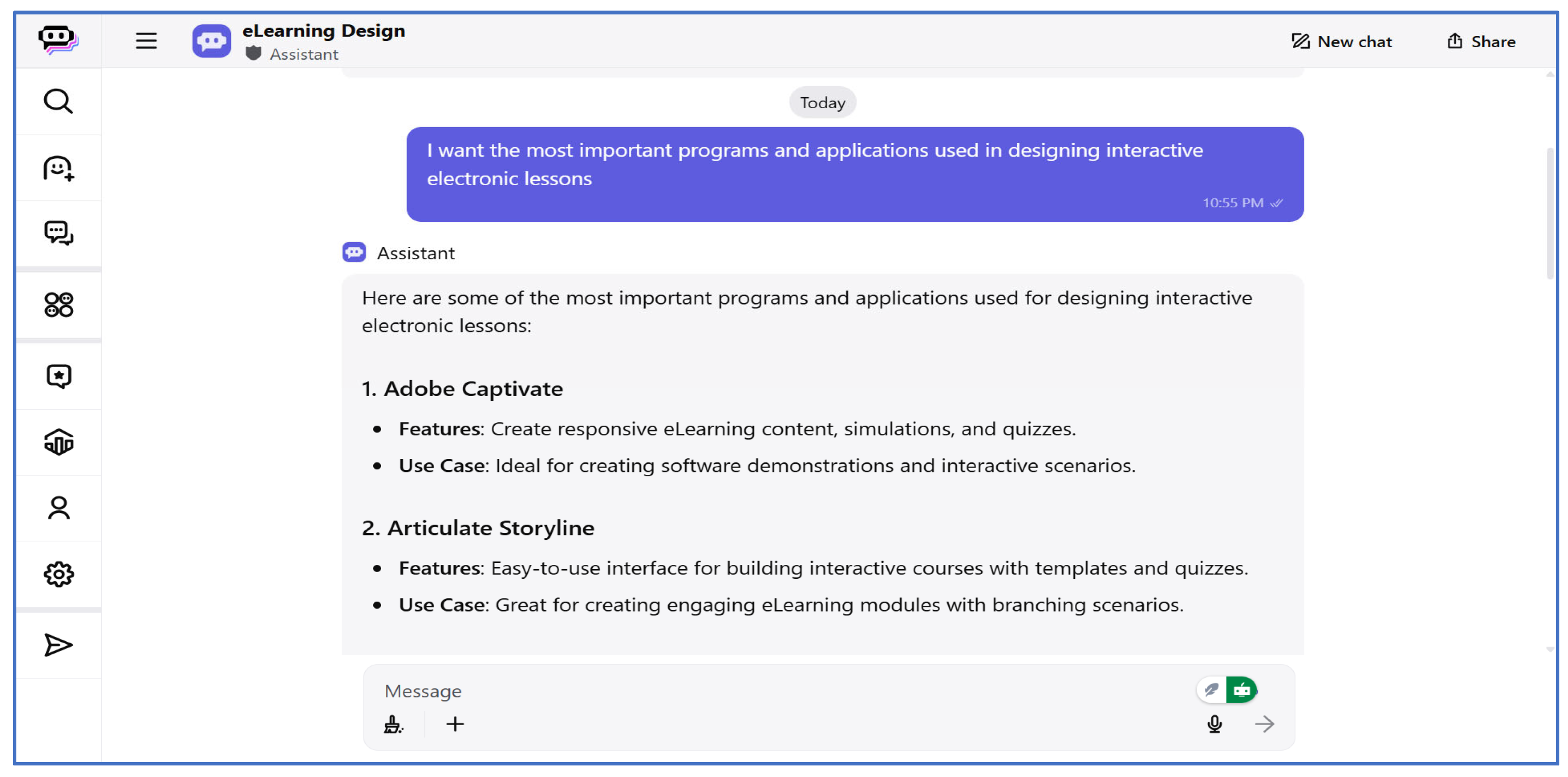
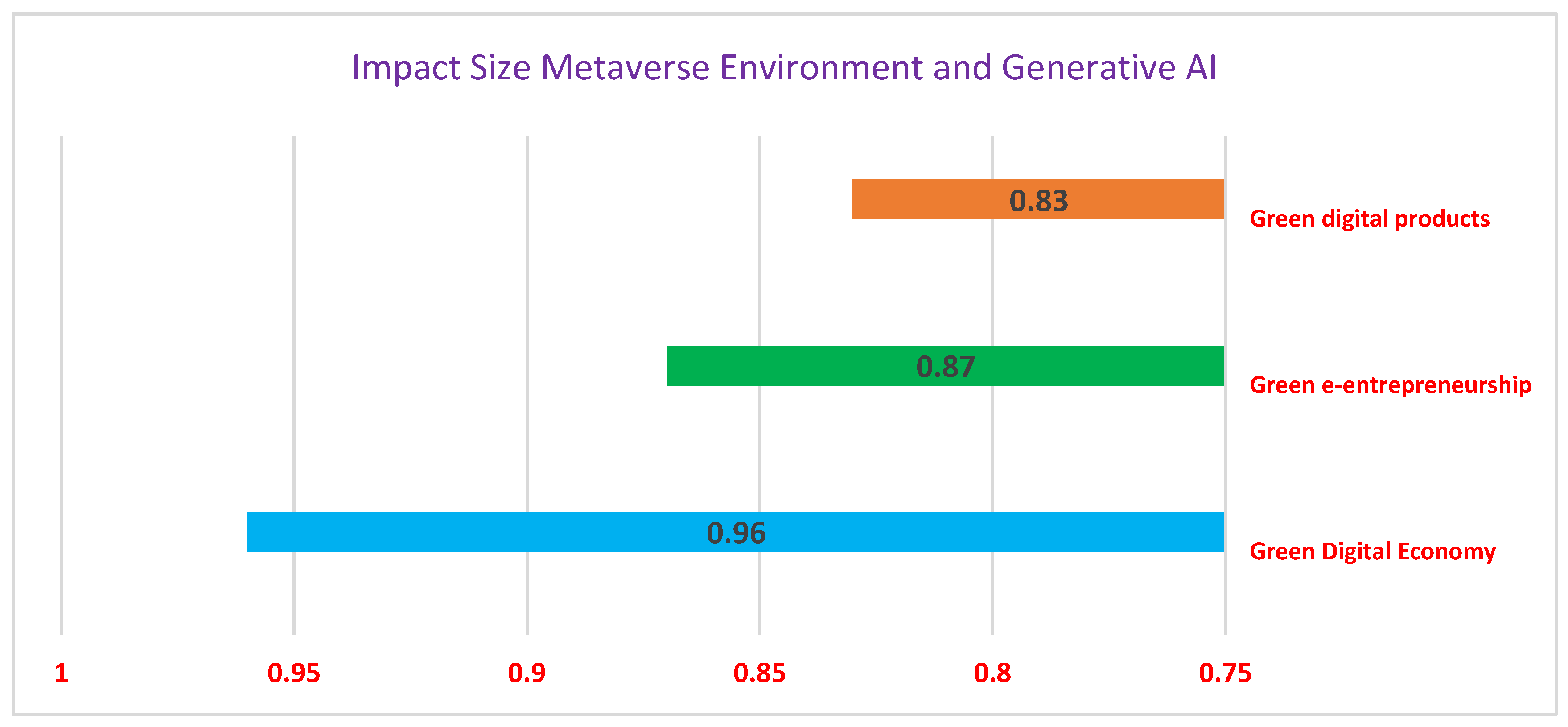
| Dimension | Digital Technology | Digital Transformation | Continuous Digital Learning | Digital Sustainability |
|---|---|---|---|---|
| Digital technology | 1 | |||
| Digital transformation | 0.41 | 1 | ||
| Continuous digital learning | 0.38 | 0.70 ** | 1 | |
| Digital sustainability | 0.52 * | 0.66 * | 0.75 ** | 1 |
| The scale as a whole | 0.69 * | 0.88 ** | 0.76 ** | 0.78 ** |
| Dimension | Proactive Action | Preferring Innovation | Self-Efficacy | Achievement Motivation | Non-Conformity | Digital Vitality |
|---|---|---|---|---|---|---|
| Proactive action | 1 | |||||
| Preferring innovation | 0.38 | 1 | ||||
| Self-efficacy | 0.26 | 0.74 ** | 1 | |||
| Achievement motivation | 0.31 | 0.61 * | 0.46 | 1 | ||
| Non-conformity | 0.44 | 0.47 | 0.39 | 0.43 | 1 | |
| Digital Vitality | 0.34 | 0.52 * | 0.62 | 0.47 | 0.42 | 1 |
| The scale as a whole | 0.65 | 0.88 ** | 0.79 ** | 0.77 ** | 0.69 ** | 0.82 ** |
| The Tool | Application | N | Average Rank | Total Ranks | Z-Value | Significance Level | Significance |
|---|---|---|---|---|---|---|---|
| Green Digital Economy Barometer | Pre | 23 | 0.00 | 0.00 | −4.581 ** | 0.001 | Significance |
| Post | 23 | 12.00 | 23.00 |
| The Tool | Application | N | Average Rank | Total Ranks | Z-Value | Significance Level | Significance |
|---|---|---|---|---|---|---|---|
| Green e-Entrepreneurship Scale | Pre | 23 | 0.00 | 0.00 | −4.214 ** | 0.001 | Significance |
| Post | 23 | 12.00 | 23.00 |
| The Tool | Application | N | Average Rank | Total Ranks | Z-Value | Significance Level | Significance |
|---|---|---|---|---|---|---|---|
| Green Digital Entrepreneurship Product Scorecard | Pre | 23 | 0.00 | 0.00 | −4.002 ** | 0.001 | Significance |
| Post | 23 | 12.00 | 276.00 |
| Independent Variable | Dependent Variable | Z-Value | η2 Eta Square | Effect Size |
|---|---|---|---|---|
| Interactive Metaverse Environment and Generative AI Platforms | Green Digital Economy | −4.581 | 0.96 | Big |
| Green e-entrepreneurship | −4.214 | 0.87 | Big | |
| Green digital products | −4.002 | 0.83 | Big |
Disclaimer/Publisher’s Note: The statements, opinions and data contained in all publications are solely those of the individual author(s) and contributor(s) and not of MDPI and/or the editor(s). MDPI and/or the editor(s) disclaim responsibility for any injury to people or property resulting from any ideas, methods, instructions or products referred to in the content. |
© 2025 by the authors. Licensee MDPI, Basel, Switzerland. This article is an open access article distributed under the terms and conditions of the Creative Commons Attribution (CC BY) license (https://creativecommons.org/licenses/by/4.0/).
Share and Cite
Abdelmagid, A.S.; Jabli, N.M.; Al-Mohaya, A.Y.; Teleb, A.A. Integrating Interactive Metaverse Environments and Generative Artificial Intelligence to Promote the Green Digital Economy and e-Entrepreneurship in Higher Education. Sustainability 2025, 17, 5594. https://doi.org/10.3390/su17125594
Abdelmagid AS, Jabli NM, Al-Mohaya AY, Teleb AA. Integrating Interactive Metaverse Environments and Generative Artificial Intelligence to Promote the Green Digital Economy and e-Entrepreneurship in Higher Education. Sustainability. 2025; 17(12):5594. https://doi.org/10.3390/su17125594
Chicago/Turabian StyleAbdelmagid, Ahmed Sadek, Naif Mohammed Jabli, Abdullah Yahya Al-Mohaya, and Ahmed Ali Teleb. 2025. "Integrating Interactive Metaverse Environments and Generative Artificial Intelligence to Promote the Green Digital Economy and e-Entrepreneurship in Higher Education" Sustainability 17, no. 12: 5594. https://doi.org/10.3390/su17125594
APA StyleAbdelmagid, A. S., Jabli, N. M., Al-Mohaya, A. Y., & Teleb, A. A. (2025). Integrating Interactive Metaverse Environments and Generative Artificial Intelligence to Promote the Green Digital Economy and e-Entrepreneurship in Higher Education. Sustainability, 17(12), 5594. https://doi.org/10.3390/su17125594






